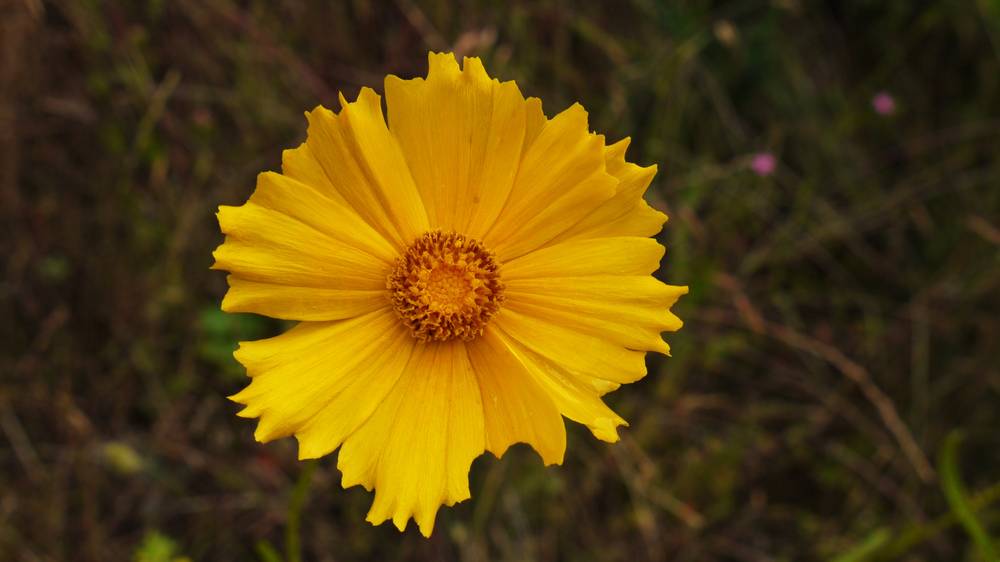Coreopsis calliopsidea
Coreopsis
coreopsis, tickseed
1–several; erect; simple or branched, glabrous or proximally villous.
basal and cauline;
basal usually withering by anthesis; opposite; simple or pinnately compound, divisions of pinnate leaves linear or terminal segments narrowly lance-oblong;
margins and surfaces glabrous or villous-puberulent, petiolate or sessile.
heads solitary or in panicle-like arrays.
flat to convex, paleate.
pistillate or sterile;
rays well exceeding involucres, dark pink to light rose or white, or yellow and sometimes marked with brown.
bisexual;
corollas tubular, gradually widened distally, yellow;
lobes 4–5, triangular; erect or spreading;
stamens 5, slightly to well exserted from corolla tubes, yellow or purple;
style branches exserted from stamen tubes.
in 2 series; erect, herbaceous, spreading in fruit; outer series somewhat shorter than inner, narrowly lanceolate to lance-linear;
tips acute;
margins hispid or much reduced and clustered at base of involucres; larger phyllaries with numerous parallel veins; inner series broadly lance-ovate;
tips acute;
surfaces glabrous, paleate.
± compressed, oblanceolate or elliptic, narrowed toward bases and tips, sometimes winged;
pappi 0 or of 2 short scales.
radiate;
peduncles glabrous.
narrow, membranous, deciduous.
Coreopsis calliopsidea
Coreopsis
North America. ~20 species; 2 species treated in Flora.
Coreopsis rosea has been reported from Sauvie Island (Multnomah County) but does not appear to have become established in Oregon.


